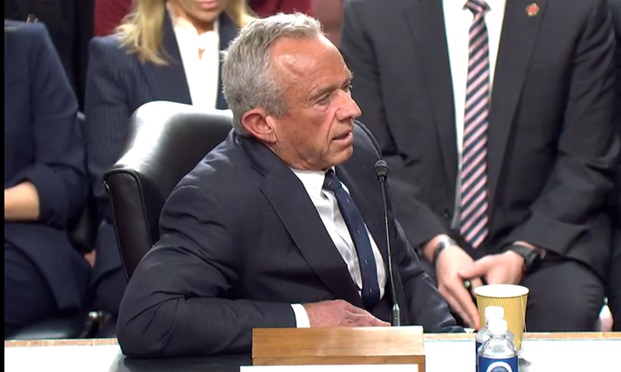When it comes to their value as tax-deferred savings instruments, health savings accounts are a triple threat.
A creation of the Medicare Prescription Drug, Improvement, and Modernization Act of 2003, HSAs allow participants in qualifying employer-sponsored health care plans the chance to defer compensation to pay for qualifying out-of-pocket health care expenses.
Like a 401(k) contribution, those deferrals into HSAs reduce participants' taxable income. Assets in the accounts grow tax-free over time.
Recommended For You
The third tax advantage really sweetens the pot and is part of the reason a growing cohort of advisors to 401(k) plans sees HSAs as a vital value-add for designing outcome-based solutions for participants. Distributions from the accounts are not taxed so long as they are used for qualifying out-of-pocket medical expenses.
Projections of what baby boomers can expect to pay for out-of-pocket medical costs are growing. Some estimates are downright scary.
HealthView Services, a Massachusetts-based provider of health care cost-projection software for financial advisors, estimates a healthy 65-year-old couple who retire this year will pay $266,000 to cover Medicare Parts B and D and supplemental insurance premiums through their retirement.
Add costs for vision, hearing, and dental care, then tack on all co-pays, and that total jumps to $395,000. HVS estimates that 70 percent of the hypothetical 65-year-old couple's Social Security payments will be consumed by out-of-pocket health care costs in retirement.
If those figures aren't daunting enough, HVS's research shows pre-retirees commonly think Medicare will cover more than it actually does. The reality? Medicare covers only about 51 percent of total health care expenses in retirement, according to HVS.
Enter health savings accounts, the distributions from which can be used to pay for all of the above, including Medicare premiums, with the exception of supplemental, or so-called Medigap, policies.
Since Congress legislated HSAs into existence, assets in the accounts have grown to more than $28 billion, according to estimates from Devenir Research, a unit of Devenir, an advisory firm that builds investment strategies for HSAs. As of midyear 2015, there were 14.5 million HSA account holders.
Most of those assets are in accounts that act like bank accounts; cash is deferred and interest accrues, albeit at today's low rates.
But a growing number of HSA contributors are deferring income to investment-based HSAs, which invest contributions in mutual fund options, comparable to 401(k) plans. According to Devenir, HSA investments reached an estimated $3.8 billion by mid-year 2015, up 34 percent from last year. The average investment account holds $14,654 in assets.
The Employee Benefit Research Institute's HSA database shows the average HSA investment account balance to be lower than Devenir's research, but notes a striking difference between those accounts and HSAs without investments (EBRI data only tracks 2.9 million accounts with about $5 billion in assets).
According to EBRI, the average investment-based account held $10,261 at the end of 2014, while HSAs without investments held an average of $1,709.
In 2014, only about 6.4 percent of HSA account holders were taking advantage of investment options, according to the accounts tracked in the EBRI database. Proponents and providers of HSAs would like to see that number grow, and they are relying on advisors to 401(k) plans to help lead the effort.
That goal isn't without its challenges. As it is, plan advisors are knee-deep in the struggle to get workers to defer more of their earnings to 401(k) plans. While auto-enrollment and auto-escalation features continue to show strong growth, there remains much more work to do. Some fear that placing another deferral option in front of sponsors and participants may overwhelm them and distract from the more important goal of enhancing 401(k) deferral rates.
Other providers of HSAs have argued that advisors are reluctant to incorporate health savings options because it is unclear how they would be compensated.
In spite of those challenges, some advisors are using HSAs to prove their worth to sponsors, particularly those most actively engaged in preparing workers for retirement.
Todd Kading, managing director of Leafhouse Financial Advisors, an Austin, Texas-based RIA that specializes in 401(k) plans, is one of the advisor channel's largest proponents of HSAs.
He is so confident of HSAs' power to better prepare workers for retirement that he has made them a focus of his firm's growth strategy.
"There's a sea change coming," said Kading, who thinks advisors to 401(k) plans will drive the HSA market.
"RIAs have to start thinking about sponsors' needs," he said. "And that goes beyond the discussions of fiduciary risk to sponsors, and beyond discussion of investment risk to plan design."
Advisors who can incorporate an understanding of sponsors' health care needs, and the demands on their health care costs, can add value to the services they bring as investment advisors, Kading said.
"Employers definitely want to provide security for their workers. But they also want them to retire. An older workforce is expensive. Their salaries are higher. And they are much more expensive to provide health benefits for," he said.
Kading is not alone in his vision for HSAs, or his belief that the accounts can be used to build a more comprehensive retirement program for sponsors.
Recently, the American Benefits Council unveiled its vision for the next evolution in employee benefits. The trade group thinks the future is one in which retirement and health care benefits are no longer separate.
Kading did say that his firm's HSA strategy has led to "quite a few" new plan sales. But to him, the strategy is less about direct revenue and more about delivering solutions for sponsors and participants.
Ultimately, the advisors that can do that will be in the greatest demand, he said.
© Touchpoint Markets, All Rights Reserved. Request academic re-use from www.copyright.com. All other uses, submit a request to [email protected]. For more inforrmation visit Asset & Logo Licensing.







